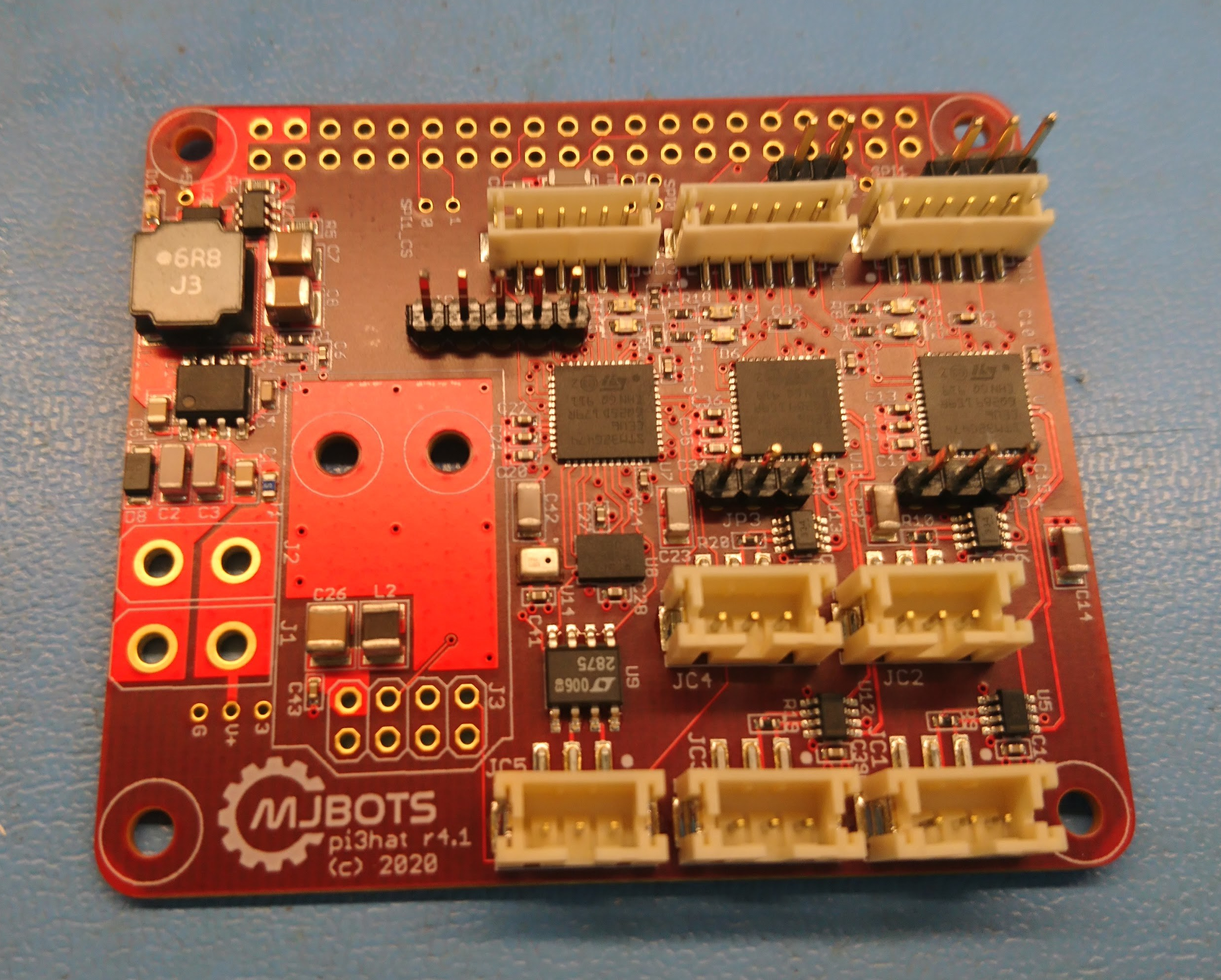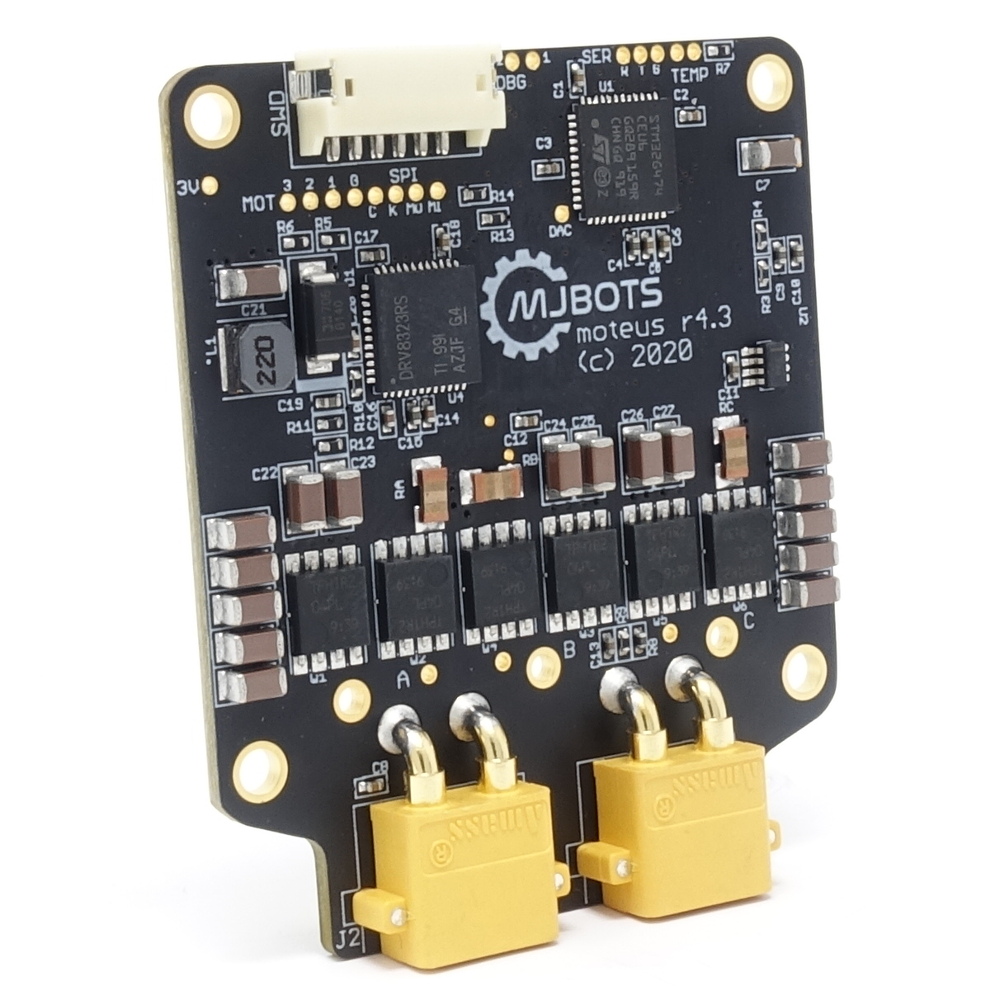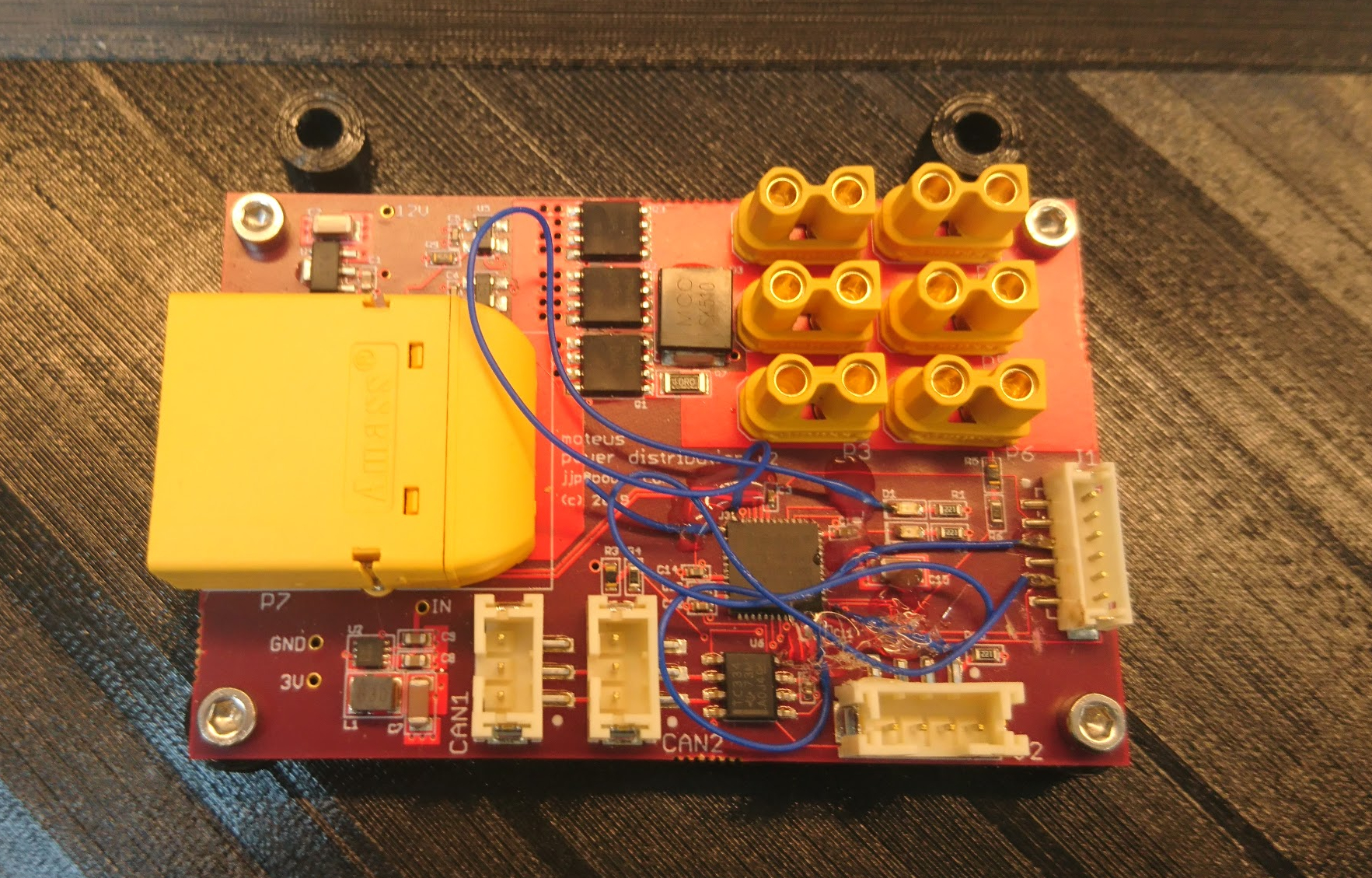Updated quad pi3 hat
I made a number of tweaks to the quad A1’s raspberry pi hat to get it ready for production, resulting in r4.1 of the board:

None of the changes were particularly big, but each has some value:
- The correct switch mode regulator is installed.
- The auxiliary CAN transceiver was switched to one that supports a larger common mode voltage. This will allow it to be connected to the power distribution board without smoking.
- Each of the STM32s now has some GPIO pins connected directly to GPIOs on the raspberry PI primarily to be used for interrupts.
- Pin headers expose a few gpio pins from each STM32 for interfacing with random external things.
- The NRF radio module changed orientation and has improved power filtering.
- I added a microphone to the auxiliary STM32. The goal is to eventually be able to use that to synchronize external video with onboard data collected during operation more easily.
I’ll bring this up in a future post!


